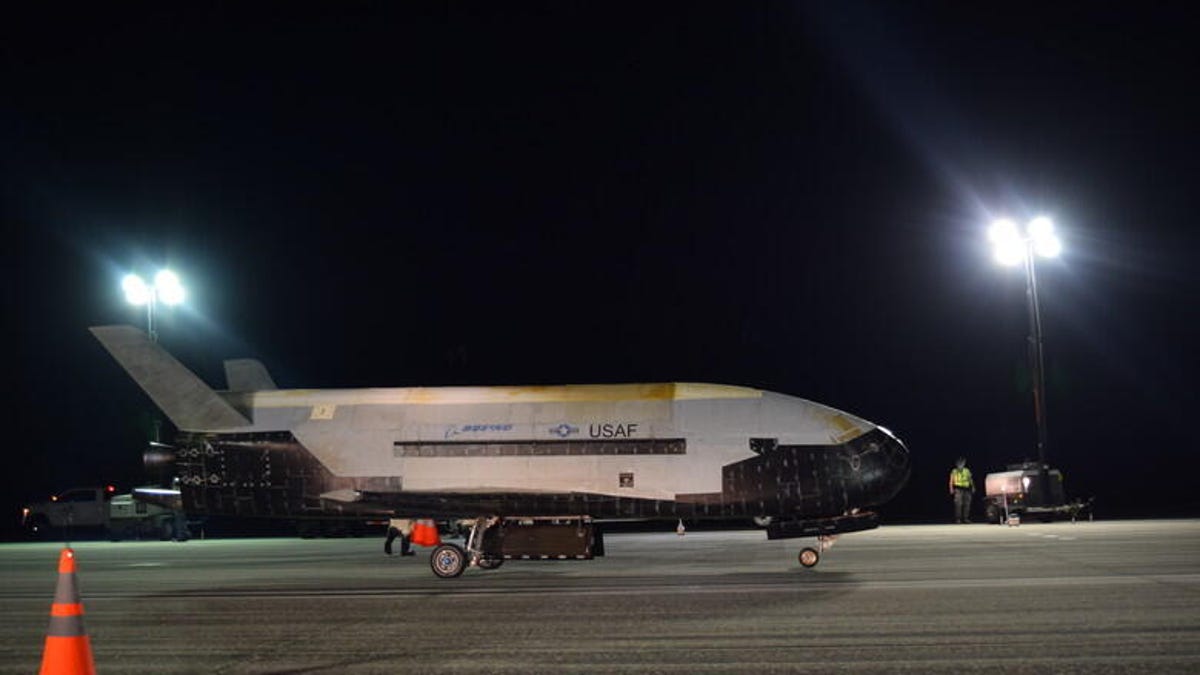Mysterious X-37B space plane lands after record 780 days in orbit
The unmanned orbiter breaks its own record for time spent in space.

After more than two years in orbit, the X-37B space plane takes a rest on the tarmac.
An unmanned X-37B space plane landed at the Kennedy Space Center in Florida on Sunday, wrapping up a record 780 days in orbit, the US Air Force said Sunday. The mission broke the mysterious plane's own record by spending more than two years in space.
"The X-37B continues to demonstrate the importance of a reusable space plane," secretary of the Air Force Barbara Barrett said in a statement.
Altogether, the program, which has at least two of the reusable planes, has logged 2,865 days in space over the course of five missions, the Air Force said. The fifth mission launched on Sept. 7, 2017, aboard a SpaceX Falcon 9 rocket.
The Air Force plans to launch a sixth X-37B mission sometime in 2020.
The Boeing-built space planes resemble a smaller version of NASA's space shuttles and have a similar reentry trajectory that uses a runway, like the old shuttles. They feature a small payload bay and use a deployable solar array for power.
The 11,000-pound vehicle is about 29 feet long, with a wingspan of just under 15 feet, and was designed to stay in orbit for 270 days. It was originally a NASA program, with roots in the space agency's lifting-body research, that ran from 1999 to 2004. The X-37B is designed to serve as a platform for experiments and to offer insights on transporting satellite sensors and other equipment to and from space.
The X-37B made its first flight in 2010. A second model took off on its first mission in 2011.
Because the program is classified, the Air Force reveals few details about the exact nature of the experiments. This latest mission hosted the Air Force Research Laboratory Advanced Structurally Embedded Thermal Spreader, an experiment designed to "test experimental electronics and oscillating heat pipe technologies in the long-duration space environment," according to an Air Force statement.

